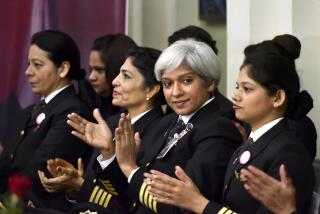It’s Impressive, but--
- Share via
Each day in the United States an average 1 million persons take scheduled airline flights. Each year those airlines fly about 214 billion passenger miles. The safety record of the scheduled airlines, although not quite as good as the records for buses and railroad passenger trains, is still impressive. About one person dies in an air accident for each billion passenger miles flown. For travel by automobiles and taxis the rate is nearly 11 times better. But the skies are steadily becoming more crowded, and there is justified concern that air travel is becoming increasingly risky. The number of reported near-misses between planes, for example, has been growing.
Transportation Secretary Elizabeth Hanford Dole proposes to address part of the safety problem by expanding the Federal Aviation Administration’s personnel rolls. Over the next two years Dole wants to add 1,000 air-traffic controllers to the nation’s airports and regional air-traffic centers. Over the next three years she would increase the number of aviation inspectors by 500. The augmentation, Dole hopes, could begin with the new fiscal year on Oct. 1.
Even the addition of 1,000 slots over two years would still leave the nation with about 1,400 fewer air-traffic controllers than it had in the summer of 1981, when more than 11,000 controllers were fired by President Reagan after they walked out on strike. Is a force of 14,000 now or 15,000 in future years adequate to provide for air safety? A recent House committee report again raised doubts that it is, charging that air-traffic controllers are overworked and that morale throughout the system is low. FAA Administrator Donald D. Engen has strongly disputed those charges.
Dole has proposed an important upgrading in air safety. Now it is best left to Congress, rather than to an Administration that is so determinedly committed to reducing the federal regulatory role, to decide just how many traffic controllers and aviation inspectors the system requires. Air-travel safety can always be improved on. It is well to remember that, in the absence of adequate measures, it can also suffer a decline.
More to Read
Inside the business of entertainment
The Wide Shot brings you news, analysis and insights on everything from streaming wars to production — and what it all means for the future.
You may occasionally receive promotional content from the Los Angeles Times.










